North Vietnam; Months of friendship between Vietnam, the Soviet Union and China; (NVN Michel Nr. 9-11); the Vietnamese Postage Stamp Catalogue reports that the single colored 100 Dong value was issued on January 8th, 1954, while the multi-colored 50 Dong value was issued in October, 1954 and the multi-color 100 Dong value in February, 1955. All the stamps were again produced at the Viet Bac Central Printing Works. The confection was a bit unorthodox with the 50D and uncolored 100D value having 72 stamps per sheet and the multicolored 100D value 81 stamps.
Michel reports two different colors for the unicolored value of 100 Dong (rose-pink and brown-rose) however the editor cannot confirm that. While there are clear differences in the stamp’s appearance caused by more or less color application during the printing process and wear of the printing plate, the base color of all the stamps in the extensive holdings of the editor look the same. Take a look at this postal used stamp that must come from one of the earlier printings:
The image appears deeper in color and clearer than later printings where the plate was more worn. Below is a cancelled to order specimen that appears a little lighter in color and the image is slightly blurry but is showing the same base color: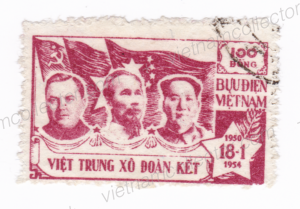
One can actually observe different print outcomes even in the same sheet. Take a look at the right most stamp in this strip of four. Clearly the cliche of the corner stamp is a lot more worn (witness the white faces) than that of the other cliches in the row. Crafty sellers are often depicting this as an “error” but that is simply a made up tale in order to charge a higher price for the stamp.
The same phenomenon can be seen with the other two values of the set. The left values are from early printings while the stamps on the right are from later printings where the entire plate was already worn.
The confection of the sheet size was somewhat unusual as it featured nine columns and rows for a total of 81 stamps. Here is a partial scan of a complete sheet in the author’s posession (with all margins intact) that shows an interesting aspect of Vietnamese stamp production. Take a look at positions E 1-3. These three stamps were affected by paper folds caused by the very thin paper getting wrinkled in the printing process. Rather than discarding the entire sheet as waste (paper was too scarce a commodity) the printing operations decided to apply a hand stamp “In Hong” which translates to “Damaged” to the affected stamps but deliver the whole sheet to post offices anyway. The postal clerk was then supposed to withhold the damaged stamps from sale but clearly this did not always happen.
Here is a complete sheet (for technical reasons only parts are shown) of the multi-colored 50 Dong value. The confection was equally unusual with nine rows and eight columns for a total of 72 stamps per sheet.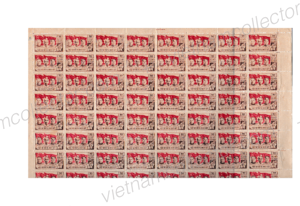
There are a few errors known for this issue. Here is a perforation error on the 50D value. The pair is imperforate in-between
Below is a strip of four of the 100D multi-colored value that lacks any perforation on the horizontal plane.
The same error show here in a pair of used stamps
Here is the mint 100D multi-colored stamp that shows the plate error broken “1” in “100”.
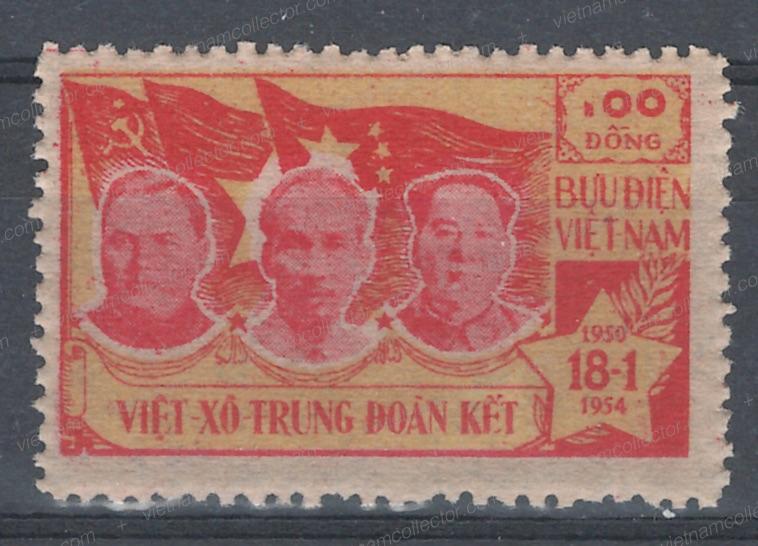
Detailed scan of the affected area.
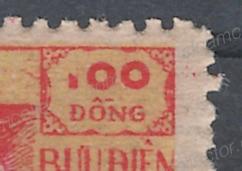
Here is a block of four that is vertically imperforate in-between the stamps.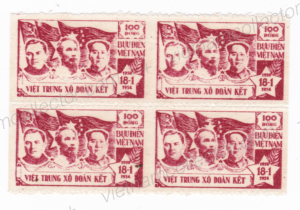
Here is a strip of three stamps that is imperforate in-between the stamps.

Here a block of four that is imperforate on the left margin: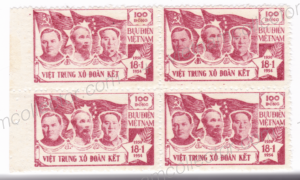
This is rare slanted printing on the backside of a block of four that is upside down as compared to the stamps in front: 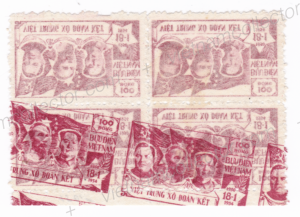
Below is a block of six. The two top stamps were affected by paper folds and therefore were stamped “In Hong” (Damaged) 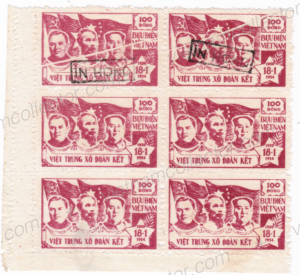
A re-occuring plate error does occur on the 50 Dong value in the field G4 (fourth stamp from the left in the seventh row). Below is a block of four. The bottom right stamps shows the sickle connected to the star on the Russian flag error. It occurs once per sheet so is seventy one times rarer than a normal stamp.
Here is another plate error on the 50D stamp. On this mint block of four the top left stamp shows the plate error “broken 0 in 50”.

Detailed scan of the plate error
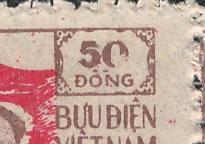
As is the case for most early North Vietnamese stamps, postally used stamps are a lot scarcer than mint ones. Michel haas finally realized that postally used stamps are much rarer than mint ones and has started to differentiate pricing. Below is a group of postally used stamps easily identifiable by the irregular striking pattern of the cancels: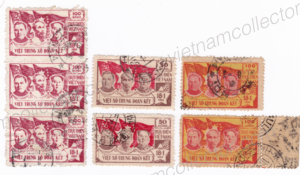
Single franking of the 50D value that is clearly of philatelic origin. La Philatelie was a professional outfit in Hanoi that produced a number of the early philatelic items. The 50D franking was however the correct tariff as intra-city mailings only cost 50% of the standard domestic letter rate of 100D. Rectangular cachet celebrating the liberation of Hanoi on October 9th, 1954.

Very rare local letter sent in December of 10954 paying the correct 50D intra-city tariff.
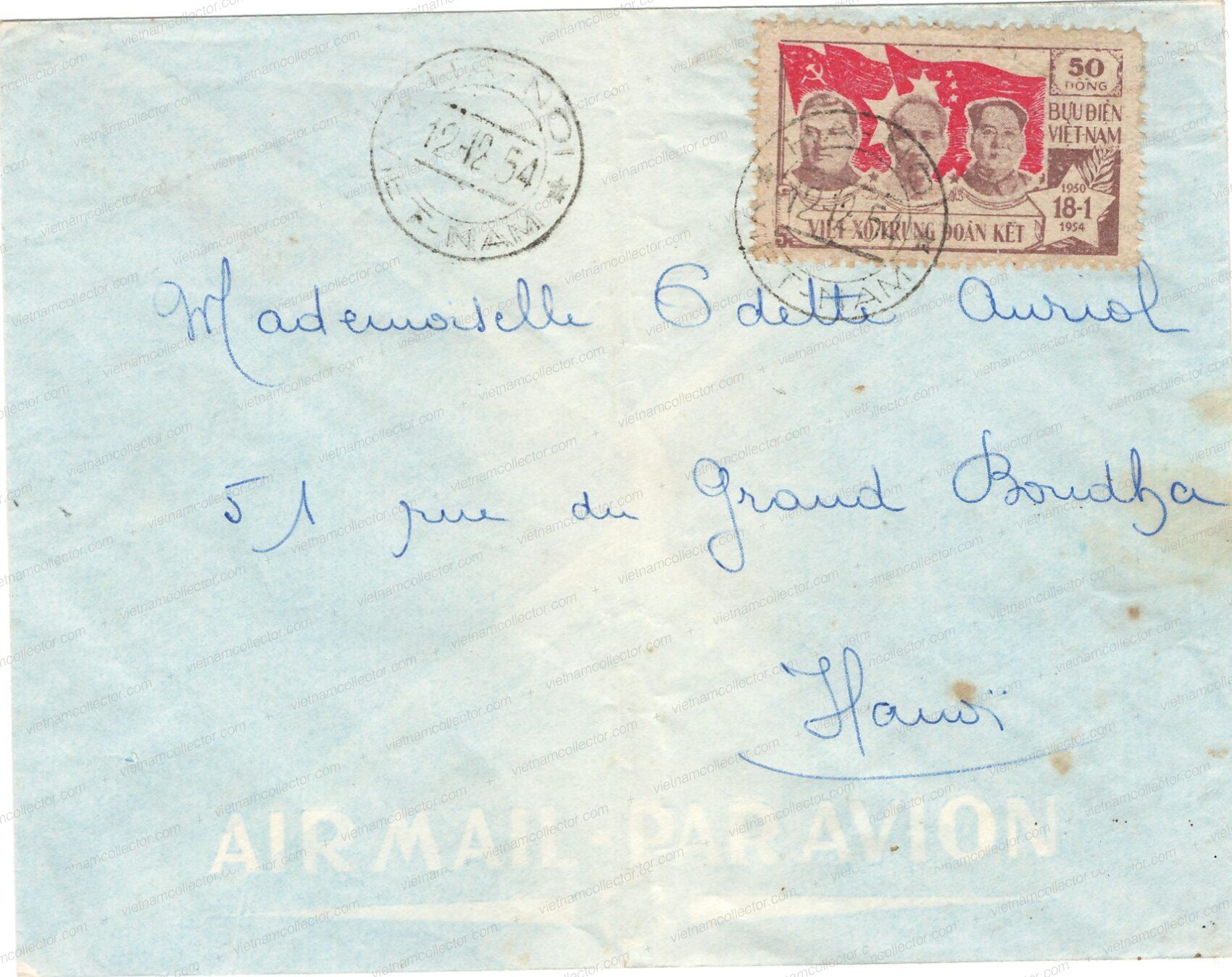
Another very rare local letter sent in September of 1955 from Ninh Binh to Hanoi. The letter carries two of the 50D friendship stamp for the correct domestic postage rate of 100D.Hanoi machine arrival cancel on the reverse. Ver few domestic letters survive from this time period as recycling, the multi-decadal wars and the humid tropical climate destroyed most of the local postal history.

Mixed franking of the 50 and 150D Liberation of Hanoi stamps together with stamps from the Friendship and Dien Bien Phu sets paying an overall postage of 300D on an international surface letter sent in April of 1955 from Hanoi to West Germany. 300D was the correct surface postage at that time. The letter was sent by the Secretary of the President’s Council, Trinh Xuan-Con who was a high level party functionary that was Theo Klewitz’ inside contact into the North Vietnamese Government. He provided to Klewitz most of the early official and military letters that can still be found today. Without this connection very little postal history of official and military letters would heave survived. Ex Klewitz.
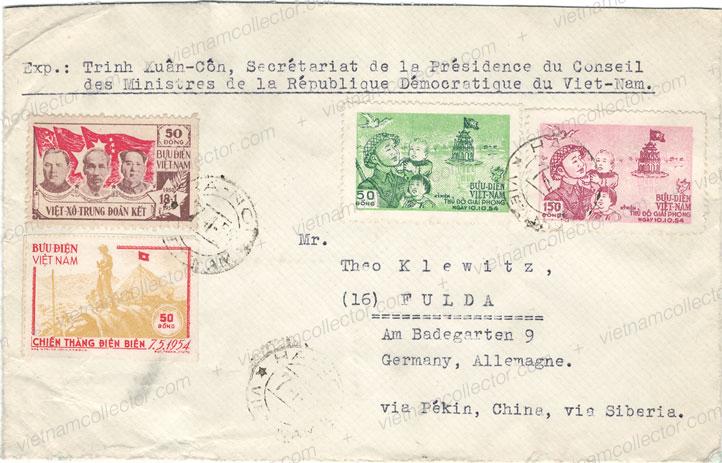
Mixed franking of the 50D Friendship stamp together with the 500D Production and Thrift, 20D Tran Dang Ninh and 10D Bien Dien Phu stamps paying an overall postage of 580D on an international letter sent in December of 1960 from Hanoi Czechoslovakia. This type of decorated envelope was not typical for North Vietnam at the time so it was most likely brought by the member of the Czech Embassy from his home country.
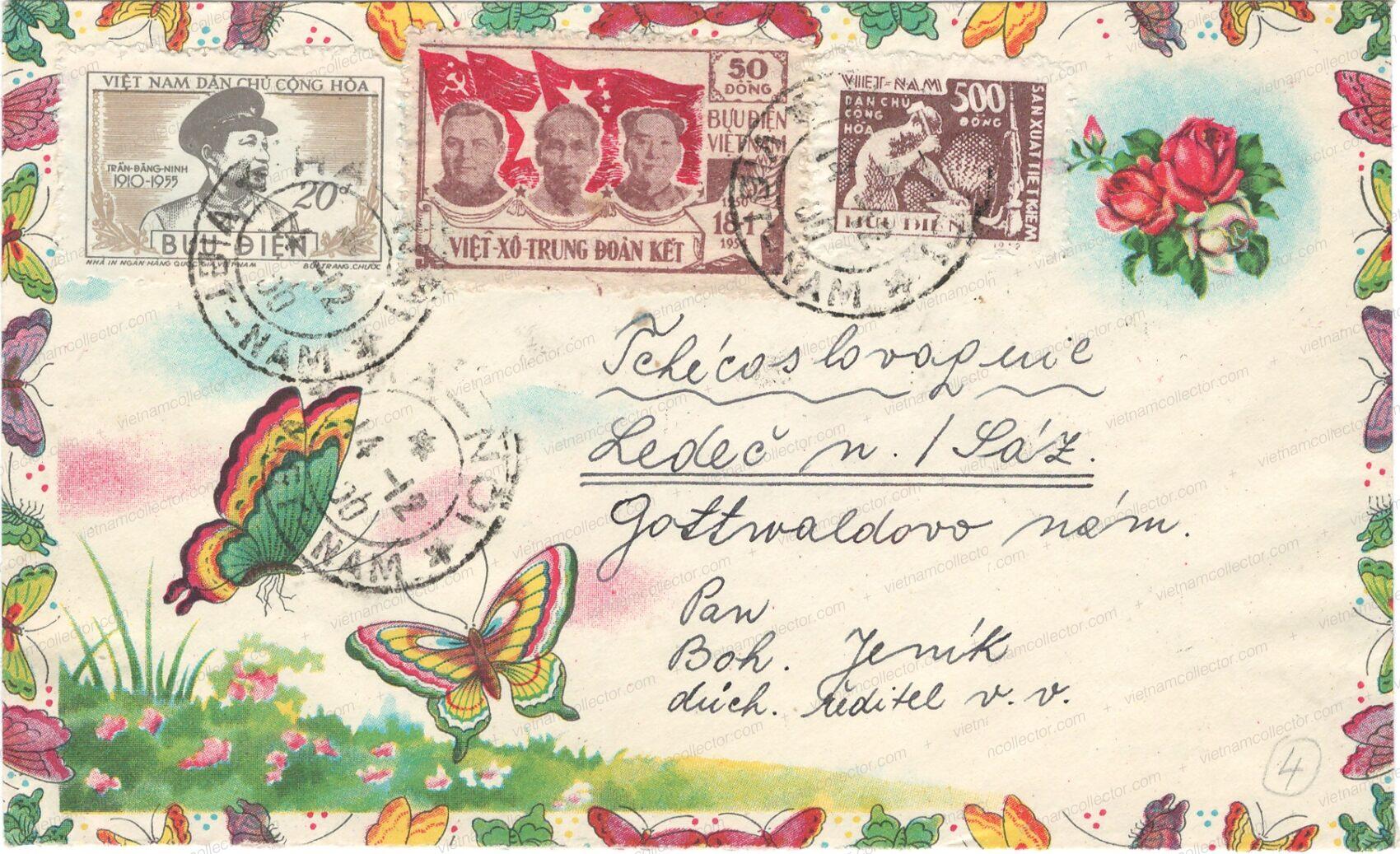
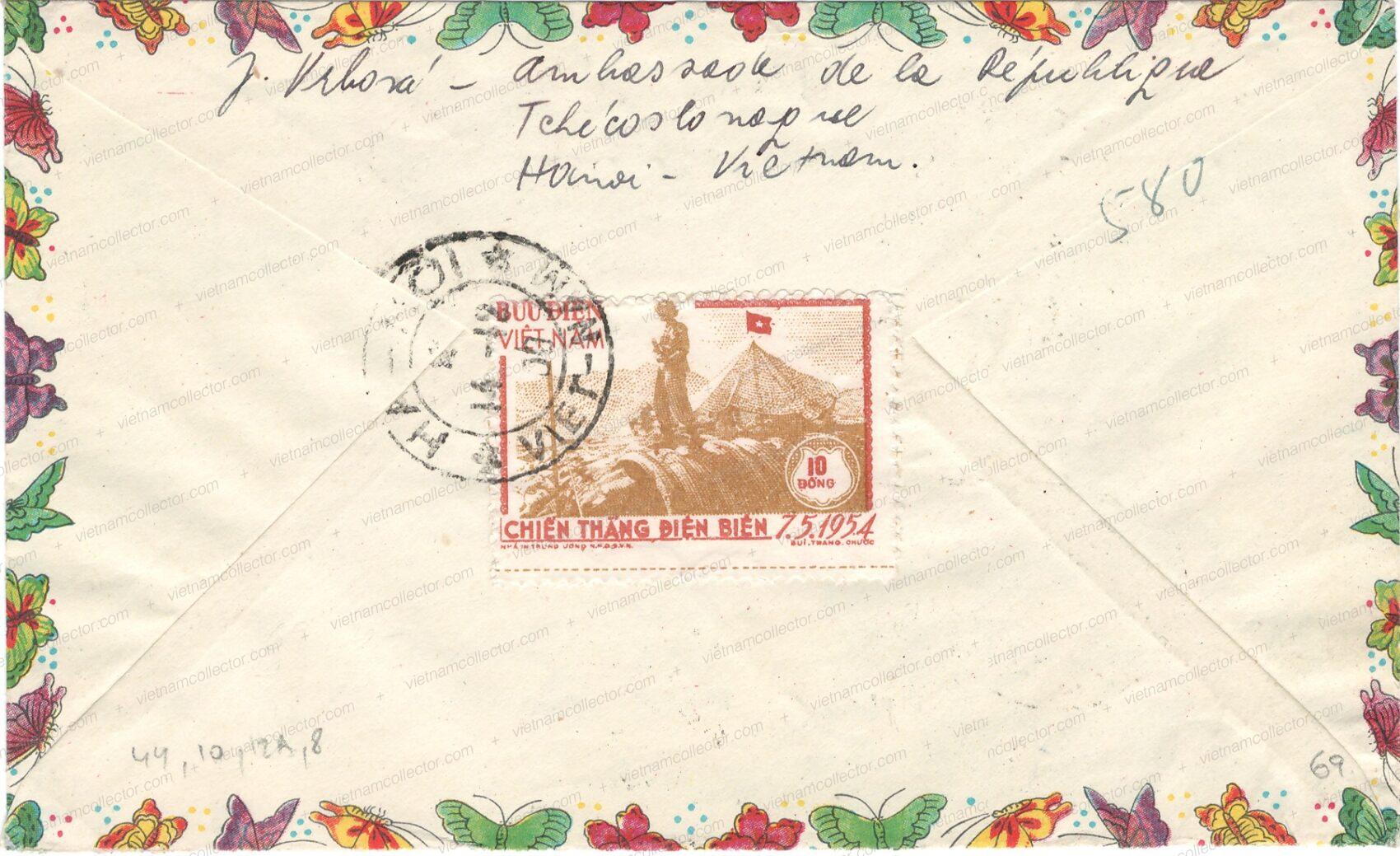
Complete letters are, of course, even more rare. Below is a very rare local letter made up of waste paper documenting the standard letter rate of 100 New Dong in force since July 1st, 1953. It is interesting to note that the sender had doubts that the postman would find the proper house. So, on the back of the cover, he drew a small picture that shows the exact location of the recipients house in-between two streets. We see similar drawings in later Ho Chi Minh Trail mail. The stamp was cancelled with the new type rectangular boxed cancel that came in use at the beginning of 1952.
International mail was still infrequent and most often went to fellow communist countries. Here are two examples dated November and December 1955 to China. Circular and square Chinese censor marks were applied to both covers. Both covers carry a postage of 300 Dong which consists of the 200 Dong base rate plus 50 Dong for air mail surcharge for every 5 grams of weight for letters to China at that time. Both letters hence must have weighed 5-10 grams. 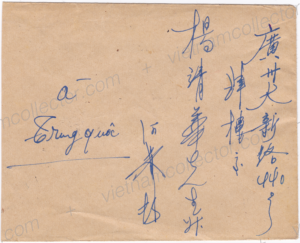
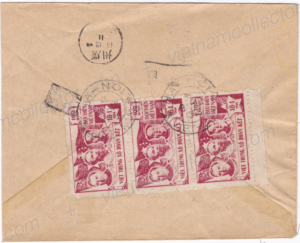
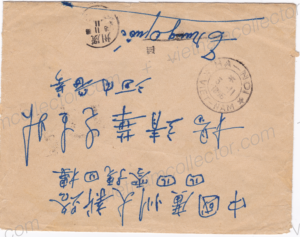
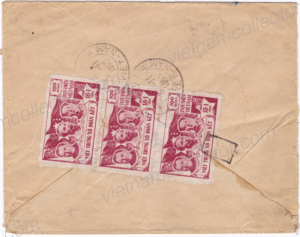
Here is a single franking of the 50 Dong value. This represents a discounted tariff that was valid within city limits and was a carry-over from the postal tariff from Indochina. The letter was mailed October 16th, 1954, shortly after the return of the Viet Minh troups to the city of Hanoi. The French troops withdrew from the city on that day and later on from all of North Vietnam. The event is commemorated by a cachet applied on the top left.
Below are two spectacular multiple frankings of letters sent 1957 to China. The basic surface letter rate as of March 13th, 1957 to China amounted to 300 Dong. Circular and square Chinese censorship markings.
The multi-colored 100 Dong value is definitely harder to find on cover. It is not clear as to why that should be the case. All the editor was able to collect so far is a mixed franking on a postcard mailed in August of 1955 to Czechoslovakia and a multiple franking from October 1955 to France. The card is franked with NVN Michel Nr. 11, 19aI, 21aII and 24 for a total of 180 Dong.
Very rare and early multiple franking of the multi-color 100D value paying the standard surface letter rate of 300D on an international letter to France. Note that the remarks “Par Avion/Via Air Mail” was manually crossed out. The letter carries an illegible Chinese transit cancel on the reverse as it was routed through Beijing and then the Transsiberean Railway to Moscow and then on to East Germany. This documents that the surface letter rate to Eastern and Western countries was identical at that point in time. The air mail surcharges that were calculated at 5 gram increments for Eastern European countries came in force only in December of 1955 (i.e. 2 months later). But even then no surcharge to Western countries was identified as the mail volume was so tiny. One has to keep in mind that sending a letter to the former arch enemy France so soon after the end of the Indochina War was clearly fraught with danger to the sender as the Viet Minh Government may conclude that the sender may either be sympathetic to France or even act as a spy.
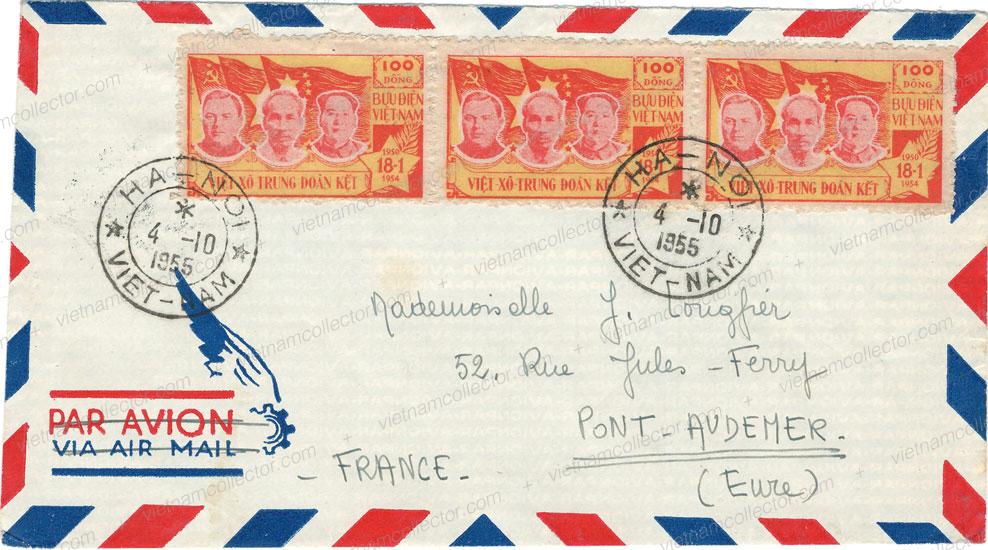
Registration Nr. 100027

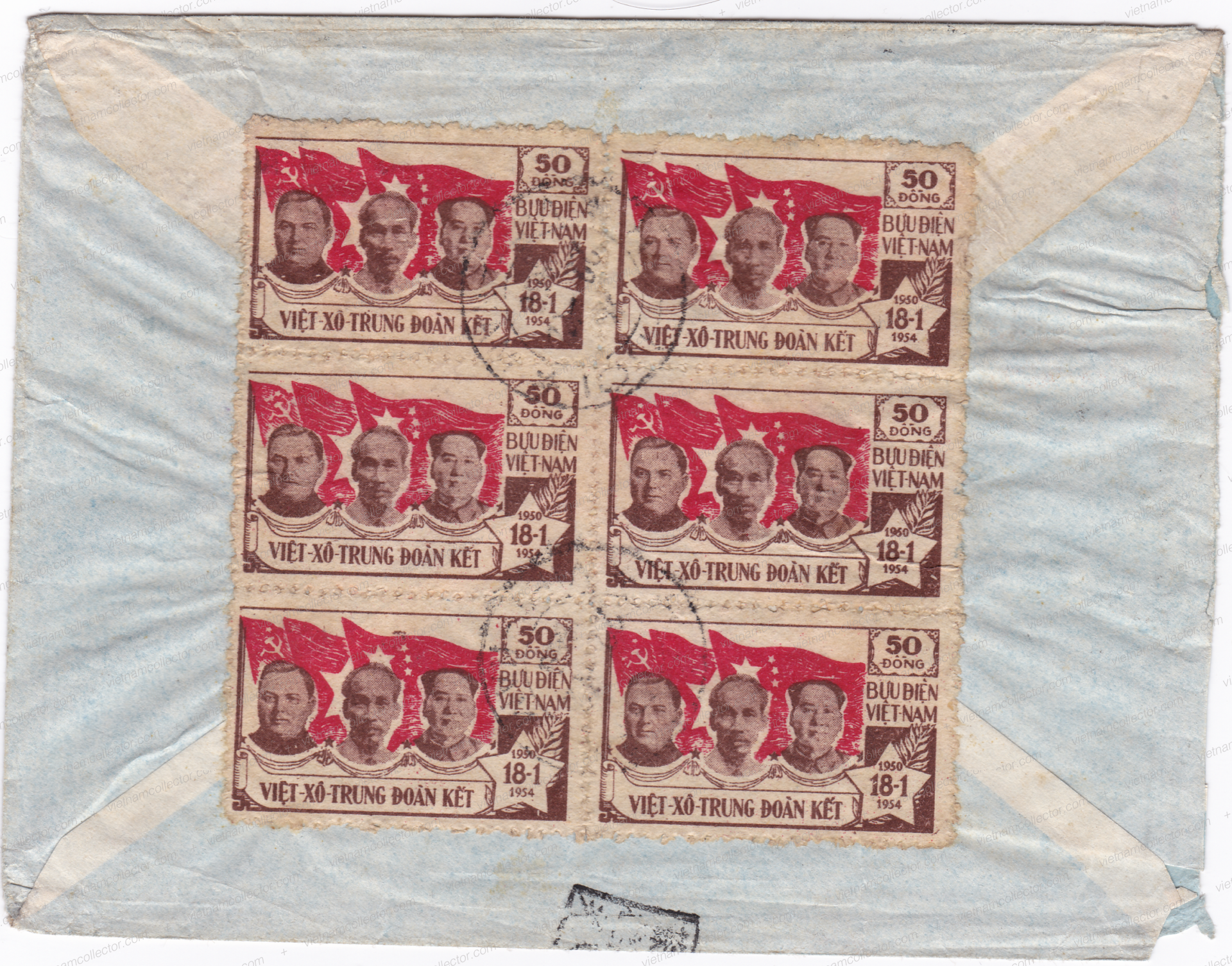

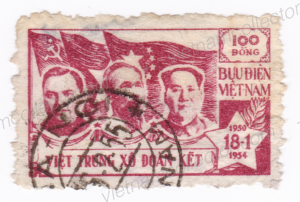

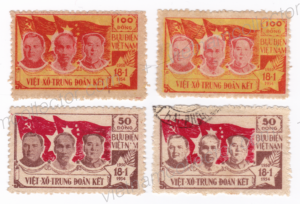
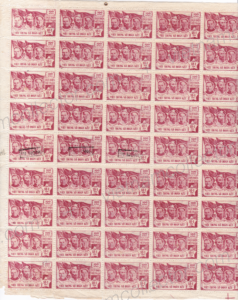
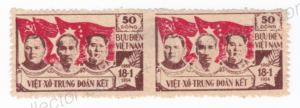
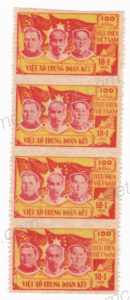
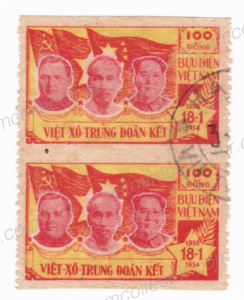
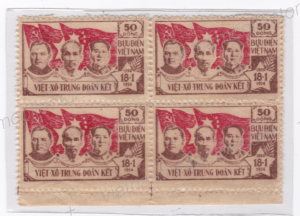
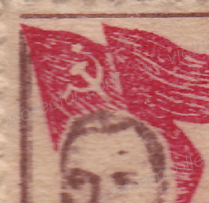
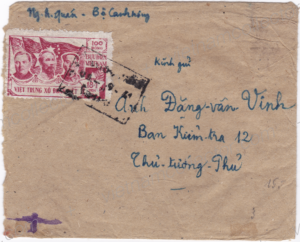
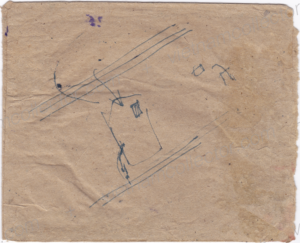
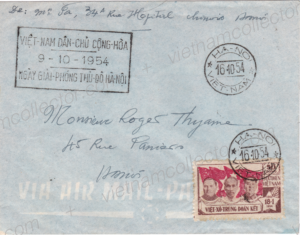
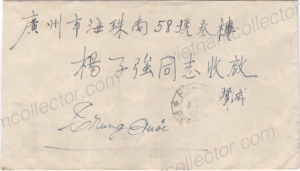
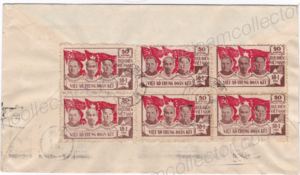
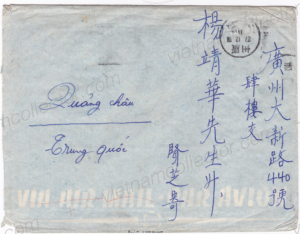
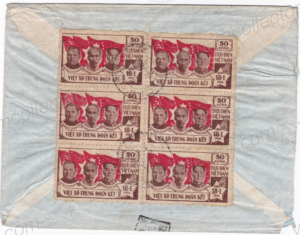
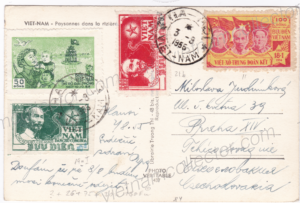
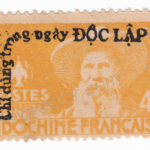
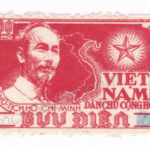


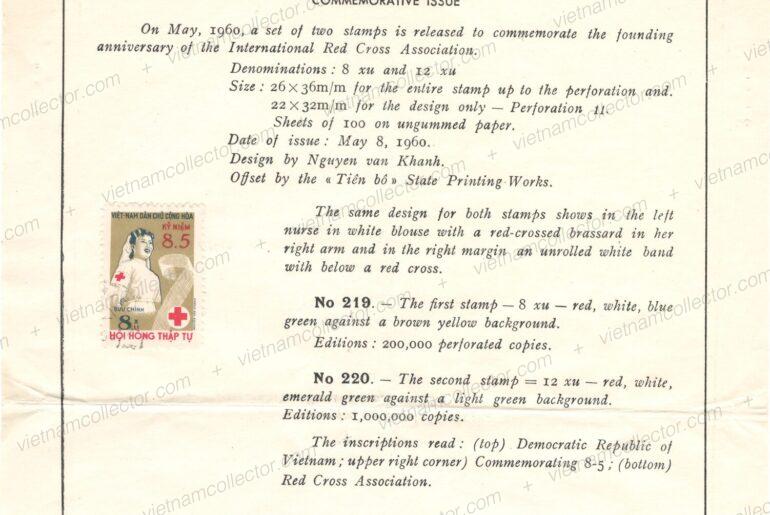
Comments are closed.